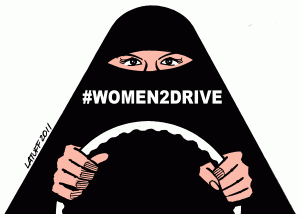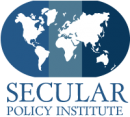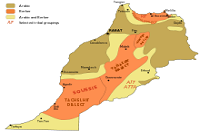The weekly report on US and International policy
by Edwina RogersÔÇï
|
|
|
|
 Moroccan Religious Stats 2014
| Christian > Mormon > Congregations | 2 | 2014 | 130th out of 175 |
| Christian > Mormon > Members | 100 | 2014 | 154th out of 195 |
| Muslim > Islamist organizations | Justice and Development Party | 2014 | |
| Muslim > Muslim percentage of total population | 99.9% | 2014 | 1st out of 184 |
| Muslim > Muslim population | 32.38 million | 2014 | 10th out of 177 |
| Secularism and atheism > Population considering religion important | 98.5% | 2014 | 6th out of 143 |
| Secularism and atheism > Population considering religion unimportant | 1% | 2014 | 140th out of 143 |
Religion’s Impact on Homonegativity
Buddhism is the least homonegative religion, according to a new study in the Journal of Homosexuality. The Buddhist site Lions’s Roar reported on the study and pointed out that PRRI’s┬áAmerican Values Atlas┬áfound that┬á84 percent┬áof Buddhists support same-sex marriage, a rate higher than any other religious tradition.
 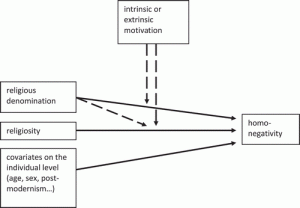
- As we want to create only a rough assessment of the religions with respect to their homonegativity, the three aspects are weighted equally for aggregation. This gives a ranking of religions, where Islam is the most homonegative religion, whereas Buddhism, Taoism, and Confucianism are the least homonegative religions. However, assuming that all religions tend to promote homonegativity,8 atheism constitutes the end of the scale:9
Islam10Catholicism/Protestant Free Churches/Orthodox Christianity11Traditional (European) ProtestantismHinduismBuddhism/Taoism/ConfucianismAtheism
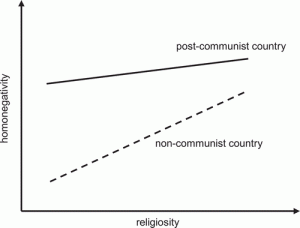 homonegativity can be investigated empirically. A positive association would mean that the positioning of a religion (in its writings, through its leadership, as well as its degree of fundamentalism) is reflected in the attitudes of the individual believer.
homonegativity can be investigated empirically. A positive association would mean that the positioning of a religion (in its writings, through its leadership, as well as its degree of fundamentalism) is reflected in the attitudes of the individual believer.To view the full study click here.
 Secular Impact in India
Non religious people in India amount to only 0.24% of the population.Therefore what influence can such a small minority have?
India’s Census (2001-2011) reveals that 2.87 million are non religious
India Hindu population drops below 80 percent as Muslim ratio rises
Reuters 26/08/2015
India defines itself as a secular socialist republic, a democratic society where no minorities should feel marginalised. But how far does this accord with the reality? Indeed what do Indians even mean when they employ the term ÔÇÿsecularÔÇÖ? Western democracies learn about this secularism from IndiaÔÇÖs small coterie of an English speaking elite. India has an epidemic of groups which I will call English writer forums. Every so often a new species of this bland faceless organism appear among the new wave of aspirant intellectuals. They have several things in common.
Secularism means the exclusion of religion, which in India is from public life. The trauma of partition led the countryÔÇÖs leaders to emphasise the common citizenship of its people rather than the religious differences which had to led to the creation of Pakistan. India was therefore to be the diametric opposite of Pakistan. In a diverse country such as this it was not initially without its merits. After all Sukarno, the first president of Indonesia, realised that his diverse island nations with a plethora of languages, beliefs and ways of life could only be held together by a common value system he called Panchasila. The man who deposed him, Suharto, though ruling with an iron fist kept to these principles which some would deem secular because they used loyalty to the nation to override narrow religious tribalism. So India under Nehru was by no means unique in using the model of secularism for nation building. So now in India, almost every party claims it is secular, even the religious ones.
NEW DELHI (Reuters) -┬áIndia‘s Hindus have dropped below 80 percent of the population for the first time since independence and media had speculated the previous government deliberately delayed the release of the data because it showed a rise in the Muslim population.
- Members of Prime Minister Narendra Modi’s ruling Hindu nationalist party, which swept to power last year, have expressed growing concern about the rising numbers of Muslims.The census data shows that Hindus declined to 79.8 percent of the country’s 1.2 billion people in 2011, from 80.5 percent a decade earlier.The share of Muslims rose to 14.2 percent from 13.4 percent in 2001 – the only major religious group to record a rise. Christians stayed at 2.3 percent and Sikhs fell to 1.7 percent from 1.9 percent. Sakshi Maharaj, a Hindu priest-turned-politician, caused an uproar earlier this year when he said Hindu women should give birth to four children to ensure that their religion survives.In the first census, conducted after Britain carved India and Pakistan out of colonial India in 1947, Hindus accounted for 84.1 percent of the Indian population.
- The number of Saudi women that have registered to vote in December’s municipal elections, the first time women will be allowed vote in Saudi Arabia’s history.
-
According to local media, women will be able to vote and run in elections held in December of this year, marking a step forward for proponents of women’s rights in a country that has received heavy criticism for its treatment of women.
“This is something new to women,” an unidentified woman told al Ekhbariya, Saudi state television. “I am pretty sure women will have different opinions and thoughts. I am very happy.”
Official voter registration begins August 22, and candidate registration begins on August 30, according to a Saudi government website. Both days will mark firsts for women in Saudi Arabia gearing up to participate in elections in December. Women will only participate in elections at the municipal level.
Could the next step be driver’s licenses for Saudi women? 